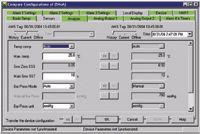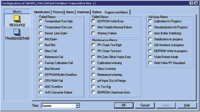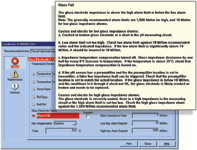Advances in Pharmaceutical Process Analysers
Pharmaceutical Technology Europe
Process analysers have evolved from basic analogue devices with adjustable potentiometers, analogue current outputs and alarm relays into smart, powerful, two-way digital transmitters with advanced features, such as automatic calibration and self-diagnostics, that can transmit more information, more accurately. This article will discuss advances in process analytical devices and how they can be applied to both new and existing pharmaceutical facilities.
In the past, process analysers were configured individually at each point of use. Software menu structures and symbols needed to be memorized. Instrumentation engineers had to bring along appropriate operational manuals, digital voltmeters and other electronic tools to configure measurements, ranges, analogue signals and alarm set points.
Further complicating the start-up process, someone needed to travel to every measurement location to set up each device. The logistics in reaching each analyser, as well as having access to each analytical device, made the configuration set-up a time consuming and intensive chore. Finally, the analytical transmitter analogue outputs and alarm relays had to be wired at the transmitter, and then the wires needed to be routed across the plant to a control room. Depending on how many alarms were required, this could be up to four or five pairs of wires for each device (depending on whether the transmitter was a loop powered or a four wire device).
It's Smart
The latest smart transmitters use modern electronic technology, which has changed the way analytical devices are set up, particularly in a new pharmaceutical facility using a digital automation system. Smart, two-way digital transmitters can be configured from the comfort of a control room. No longer is the instrument engineer required to scroll through multiple menus on a computer screen to configure analytical parameters.
The analyser configuration screen (Figure 1) simplifies the process by having all the parameters in one location — the instrument engineer can simply click onto the analogue output tab to configure the primary variable output. This is a distinct change from the old analogue sensors, which had only one measurement on offer. Most modern devices are multivariable; that is, they can configure and correct outputs using other parameters, such as temperature, or apply the measurement to a preset profile based on the raw measurement. For example, with a conductivity meter, the liquid conductivity can be provided as a measurement referred back to a reference temperature of 25°C; or as the concentration of one of several types of standard solution; or measurements of actual uncorrected conductivity and temperature can be provided, which is very important in water-for-injection (WFI) applications, to comply with US Pharmacopeia (USP) requirements.

Figure 1. Configuration set up menu.
Other settings can be made on further screens, such as alarms and any diagnostic warnings that need to be flagged up on the monitor screens in the control room for operational attention. These might include a resistance temperature detector (RTD) failure, a glass impedance measurement alarm or a reference electrode impedance alarm for pH transmitters. The analyser tab allows the engineer to easily configure the analytical device to automatic or manual temperature compensation and automatic calibration techniques. Even the local operator interface display can be configured remotely. If the same configurations are to be repeated on other instruments in the plant, then the analyser configuration can be repeated simply by 'drag and drop'. This feature is particularly helpful in biofermenter applications where multiple redundant pH and dissolved oxygen measurements are required.
Using these, the commissioning time on a new pharmaceutical plant that has selected well-designed smart analytical transmitters can be greatly accelerated, sometimes by as much as 80%. This offers pharmaceutical manufacturers the opportunity of significant improvements to their bottom line, with reduced start-up time/costs, and also faster plant production start-up.
Because many processes can yield as much as $1 million per day, faster plant start-up can lead to a considerable benefit on the bottom line. It must be noted that a well-designed digital automation system is required to interpret all this information to maximize the capabilities of these smart transmitters.
Not all host systems can understand and present all the data that are transmitted from these analytical devices, particularly when monitoring sensor performance diagnostic information. In addition, analytical transmitters with FOUNDATION fieldbus communication protocols require connection to only one pair of wires, not four to five pairs. As multiple devices can be connected on one fieldbus segment, fewer wires need to be routed back to the control room (note that the actual number of transmitters allowed on each fieldbus segment is limited by the total current draw of each analytical device on the segment). The net result is fewer wires need to be installed, realizing additional savings in electrical installation costs.
The cost savings here and in the commissioning time normally offset the slightly higher cost of the digital analysers compared with analogue models.
Cost Savings
For an existing facility, adding an extra measurement point or replacing a conventional analyser with a digital unit will not necessarily result in a saving on wiring costs. However, existing plants have been able to avoid installing new cables by moving to a digital or fieldbus system, digitally transmitting data from 6 or 10 instruments along just one twisted pair loop — releasing pairs available in an existing multicore for further fieldbus segments. Digital systems should be particularly considered for plant extensions, to gain experience of the new technology, which can be seamlessly integrated into most existing plant control schemes. The improved information and maintenance savings explained later can then be seen at first hand.
Configuration Validation
Verifying proper configuration set-up prior to the plant start up used to be almost as time consuming as the initial configuration of all the analytical devices. Instrument technicians needed to determine whether the devices were properly configured.

Figure 2. Configuration comparison menu.
Today's smart analytical transmitter streamlines this process significantly. Along with a smart host system, operators can view the analyser configuration history on their desktop (Figure 2), allowing a quick snapshot on how the analyser is configured, and compare it with previous configuration versions. All configuration changes are date stamped, identified by user and filed into the archives (Figure 3), complying with 21 CFR Part 11.1 A digital system will create the archive and audit trail records required, eliminating the time and cost of paperwork and paper-based systems.

Figure 3. Configuration log.
The smart analytical transmitter stores all configuration changes from the moment the analyser is put into service. If there is a question as to why an analyser parameter was changed, a process engineer can contact the person who made the change and discuss the reasons. Any system controlling a pharmaceutical plant ensures that access to the configuration set-up screens is accessible only after entering a password, thereby locking out personnel that should not be able to make critical process control changes without the required authorization.
Performance Diagnostics Information
The older conventional analytical instrument was limited in diagnostics — usually the 4–20 mA signal could be driven to full scale if a fault developed or a relay could be triggered. Modern diagnostic techniques allow far more information to be transmitted back to the operator, both about the internal workings of the electronics unit (the sensor's condition) and the process itself, as it affects the sensor.
Microprocessor self-monitoring is well known and is taken for granted. But the electronics can monitor and track changes in the impedance between the multiple electrodes in a pH sensor; for example, to signal sensor condition. The measured impedance of the glass of the sensor will be increased if the sensor is coated with a deposit or if it is not in the process fluid at all. The impedance decreases if the glass has been subjected to a chemical attack and become thinner, or if a crack has developed. Monitoring and tracking this impedance can show the sensor ageing process and condition — information that can be passed to the maintenance department.
The microprocessor-based systems also use measurements on sensors for conductivity or pH measurement to enable an autocalibration routine, adjusting the sensitivity as coatings on the outer surfaces, or dilution of the electrolyte (in a pH probe), progress with time. Typically, measurements between extra sets of electrodes provide the basic data for the autocalibration routines, and the variation of the results with time shows the engineer how the sensor is aging, allowing the sensor's life to be monitored and predicted.
Temperature measurements in the sensor are typically monitored and if, for example, a process issue has exposed the sensor to temperatures in excess of the maximum allowed, the sensor can be flagged for replacement. Some of the parameters monitored can be seen in Figure 4.

Figure 4. Diagnostic device menu.
Maintenance and Repair Cycles
With analogue devices, maintenance technicians frequently had to resort to equipment fault diagnosis directly on the printed circuit boards. This required access to the supplier's printed circuit board drawings as well as training in board level repair techniques. The development of first generation microprocessor-based transmitters advanced the diagnostics available, eliminating much of the board level repair work.
However, analytical field troubleshooting still consisted of going to the transmitter to diagnose the condition, calling the factory for technical assistance, and possibly a second trip with the correct parts and tools to get the failed measurement back up and running. If the analyser was still not functioning properly, then the supplier had to be called or the unit sent back for repair.
Manuals get misplaced, customer service phone lines are dependant on the competence of the person contacted, and some of the communication between maintenance technician and factory technical support gets misinterpreted. Waiting for a trained service technician to arrive on site could take some time, and sending the analyser for repair may take even longer! All these factors delay getting the important process measurement back online. Back-up analysers can be held in inventory, but they are an additional cost.
Today, smart digital transmitters, along with a well-designed host system, define the fault conditions at the user's terminal. Maintenance staff no longer have to search for manuals as each of the analyser's manuals reside on the host system. If a situation or fault is unclear to the technician, then additional information is available through embedded help menus (Figure 5). Simply hit the "?" icon and point to the item in question. If the information presented is not clear, then the user can scroll down to additional levels of detail that define the faults, determine the typical factory set points and offer advice on how to address the condition.

Figure 5. Help menu.
The embedded menus help define the severity of the fault, recommend necessary action, and prepare/advise the technician to fix the device if a visit to the analytical transmitter is really necessary. The goal is to avoid unnecessary field trips to the device and to get the transmitter back online as quickly as possible. If a technician cannot fix the analyser remotely, then he/she will be better advised and equipped for when they have to go out on site to perform field repairs. Also, having this information at the technician's fingertips will help the communication with factory technical support if those individuals need to be contacted for troubleshooting purposes.
Routing and Auditing Information
Finally, the information available from smart sensors must be properly managed. Maintenance and operation staff numbers are not growing to handle all the newly available information; in fact, most staff levels are being downsized for companies to remain competitive. Therefore, operators and maintenance personnel should not be overwhelmed with advisory messages, pop-up alerts and alarms. Messages must be prioritized either as critical or informational (Figure 6). Advisory messages such as "calibration in process" should have a different priority level to a glass electrode failure or central processing unit (CPU) failure.

Figure 6. The audit trail menu - critical alarms.
Typically, there should also be three levels of alarm:
- Failure alarms should notify operators that the measured value is no longer valid, and it should notify maintenance personnel that the analyser requires immediate attention.
- Maintenance alarms should notify operators that the measured value status is good or uncertain, and the copy for the maintenance personnel suggests that maintenance on the analyser needs to be scheduled.
- Advisory alarms should notify operations and maintenance personnel that the analyser may be out of service because of a calibration or simulation currently taking place.
Messages must also be routed to the proper individuals. If a critical fault event occurs, process operators must be notified that the measurement is no longer valid and maintenance personnel must be notified that an analyser problem exists. Operators should only be concerned with faults and messages that directly affect the analyser measurement validity. Operators do need to have access to advisory messages as calibrations must be performed and documented prior to the batch commencing, complying with 21 CFR Part 11 guidelines.
Next Developments
Future analytical transmitter developments will use more predictive diagnostic techniques to minimize the number of field activities. Also, further diagnostic information on the sensor's health will be transmitted. Information for pH sensors will include diagnostics such as the aging of pH glass; online detection of reference electrode poisoning; and online detection of pH electrode slope changes through improved electrode impedance measurements. These ideas will need to be developed. For amperometric sensors, real time information on fill solutions also needs to be developed.
The ultimate goal for all process analytical transmitters is for maintenance personnel not to touch the analytical transmitter or sensor unless the device indicates that a failure could be imminent. The objective is to eliminate non-productive preventative maintenance functions. If there are no fault conditions, then everything is ok and there is nothing to worry about.
Microprocessor-based analytical devices revolutionized the industry. Digital communications protocols increased their power and gave remote access capabilities. Now a smart analyser, continuously communicating with a well-designed host system, creates a powerful tool to accelerate start-up, and maximize uptime and performance. The pharmaceutical facility of the future will use such systems to ensure that all analyser performance is valid, maximizing productivity while reducing maintenance costs and increasing efficiency as a result of monitoring diagnostic signals.
David Anderson is the product marketing manager for the life sciences industry at the Rosemount Analytical division of Emerson Process Management, USA.
Reference
1.
www.accessdata.fda.gov/scripts/cdrh/cfdocs/cfCFR/CFRSearch.cfm
David Anderson is the product marketing manager for the life sciences industry at the Rosemount Analytical division of Emerson Process Management, USA.
Pharmaceutical Tariffs Are Imminent: How Industry is Bracing for Impact
April 16th 2025On April 14, 2025, the Trump Administration launched a national security-driven investigation into pharmaceuticals, a move that will likely result in tariffs being placed on pharmaceutical drugs, ingredients, and other components that are imported from outside of the United States.
Drug Solutions Podcast: A Closer Look at mRNA in Oncology and Vaccines
April 30th 2024In this episode fo the Drug Solutions Podcast, etherna’s vice-president of Technology and Innovation, Stefaan De Koker, discusses the merits and challenges of using mRNA as the foundation for therapeutics in oncology as well as for vaccines.
